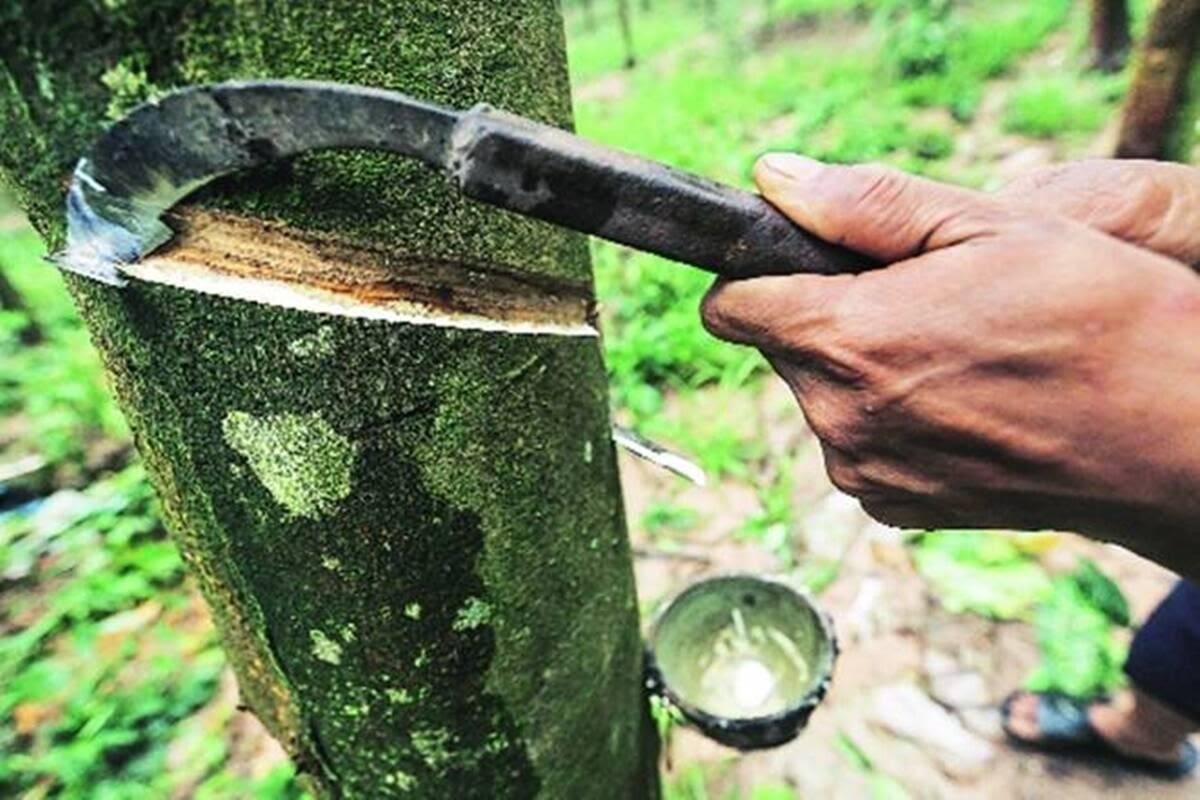Rubber, also known as India rubber, latex, Amazonian rubber, caucho, or caoutchouc, was originally grown and considered polymers of the organic compound isoprene, with lesser impurities of other organic compounds and water.
Currently, rubber is harvested mainly in latex from the rubber tree. The latex is a sticky, milky and white colloid formed by making holes in the bark and collecting the liquid in containers, a process called “tapping”. The latex then is filtered into the rubber that is ready for trade processing. In vital areas, latex is allowed to thicken in the collection cup. Finally, the lumps are collected and prepared into dry forms for sale.
Natural rubber is used widely in many forms and products, either alone or other materials. It has a large stretch ratio and high flexibility in most of its proper forms and is water-proof.
Everyone is using rubber in many forms like eraser, elastic and many other ways. But have you ever thought about where it comes from? Here we will give you every information about rubber.
Read more: 5 Steps Followed By All HDPE Pipe Manufacturers In India
Leading Rubber Producing States
Kerala is the most extensive producer of natural rubber in India. Rubber-growing states, including Kerala and Tamil Nadu, estimate 81% of production. Apart from those regions, there are the North-Eastern states of Tripura, Assam and Meghalaya, Odisha, Karnataka, Maharashtra and West Bengal.
Thailand is the world’s leading raiser of natural rubber. Thailand’s raw rubber production is estimated to be 4.85 million metric tons. Indonesia holds second place after Thailand, with a production estimation of 3.3 million metric tons.
Odisha is the only state in India, who is not producing rubber.
How much rubber a tree produces?
A common rubber tree produces 19 pounds of rubber latex annually, and it requires 700,000 rubber trees to supply each year with natural rubber. Trees are six years old before rapping for rubber begins, and it may wipe them for up to 28 years.
Varieties Of Rubber And Rubber Trees
A group of hot flowering plants consider over 1100 varieties of rubber trees. The different rubber tree varieties hold plants with various leaves, reddish leaves, tiny versions, and more.
The popular and trade source of natural rubber is Hevea brasiliensis, which originated in India in 1902 and grown in Kerala. Even though it is a tropical tree, it grows well in the soils of the North eastern states.
Varieties of Rubber in India includes PB 86, Tjir 1, PR 17, BD 5, BD 10, GT 1, PB 28/59, PB 217, PB 235, PB 260, RRII 5, RRII 105, RRII 414, RRII 430, RRIM 600, RRIM 703 and PCK-1, 2. They are not described but identified and well known by the growers.
Uses Of Rubbers
Rubber has used for over 2 million years. It is a natural product obtained from the rubber tree, and its uses to keep on growing. Here are some of its uses:
1. Tires and Tubers
Tires and tubers are generally made of rubber. They are the biggest consumers of this stuff. All vehicles, whether it is big or small, use wheels made with rubber.
2. Manufacturing of Automobile padding
Rubber is used in the making of seals and padding for automobile parts. It is long-lasting and doesn’t shrink out fast.
3. Manufacturing of Airbags
Some vehicles are outfitted with airbags that protect the driver from getting injured in a high force accident. These bags are entirely made of rubber that increases depending on the impact and shields the driver from getting any vital injuries.
4. Used to Manufacture Clothes
In the manufacturing industry, rubber produces expandable and tight-fitting clothes in their natural fibrous form. These mainly include cycling shorts and swimming costumes.
Farming Of Rubber Trees
Rubber latex is obtained from rubber trees. The commercial life period of rubber trees from plantations is around 32 years, till 7 years of immature state and around 25 years of the productive state.
The soil condition is well-drained, weathered soil consisting of laterite, sedimentary types, non lateritic red or alluvial soils. For better cultivation of trees, farmers use everything best. Manures, implements, machines and many more they choose. They mainly prefer Swaraj 735 tractor to plough their farms and also attach implements with this tractor. This tractor helps to achieve the best productivity in farms.
The climatic conditions for the extraordinary growth of rubber trees are:
- Rainfall of around 250 centimetres evenly scattered around at least 100 rainy days per year
- The temperature range should be approximately 20 °C to 34 °C, with a monthly mean of 25 °C to 28 °C.
- Atmospheric humidity should be around 80%
- About six hours per day of sunshine per year is required.
Production Of Rubber
Production of rubber consists of four basic steps:
- Mastication when the elastomer is cut, and the molecules are broken down to give a more effortless flow.
- Mixing, usually carried out immediately after chewing, when additives are incorporated.
- Shaping of the thick mass.
- Curing, when the polymer molecules become interlinked, and the shape is set.
We hope you like this information about rubber farming. For more information about farming and technologies, stay connected with Tractor Junction.
